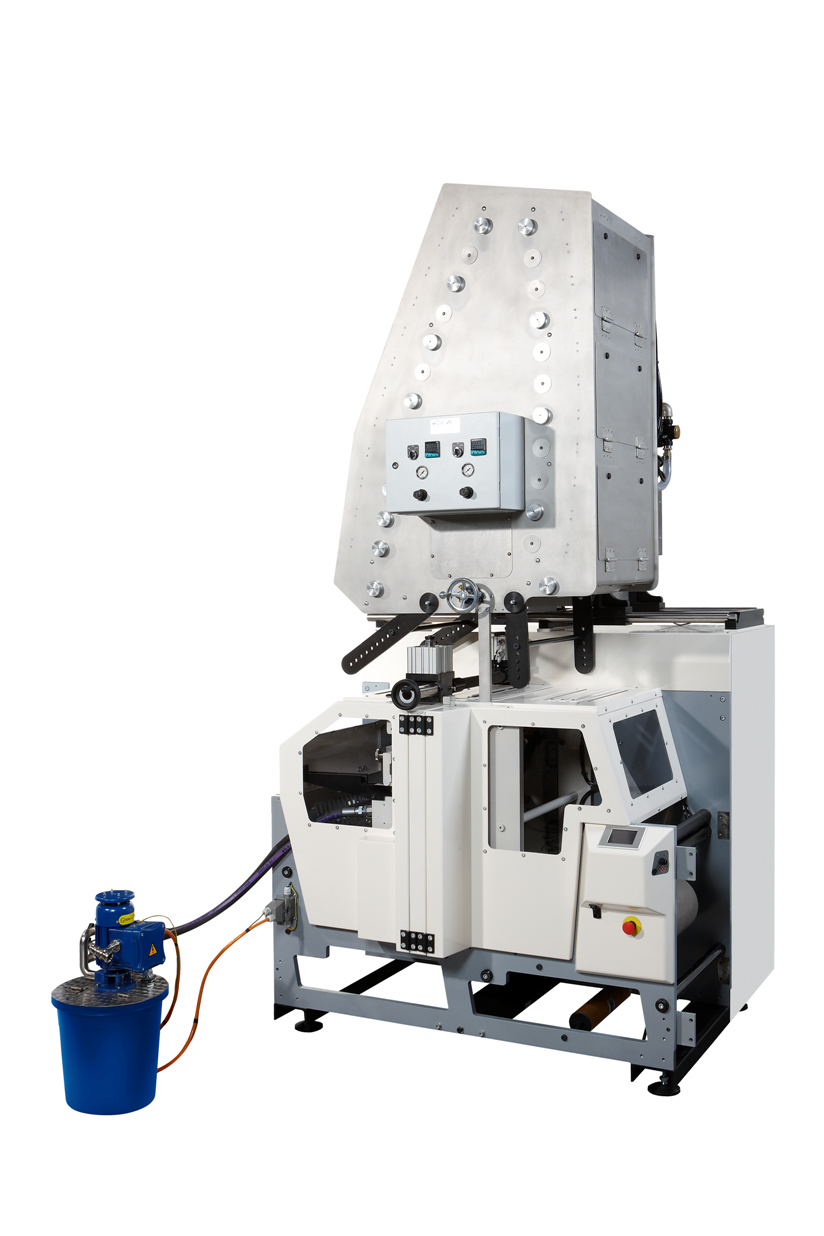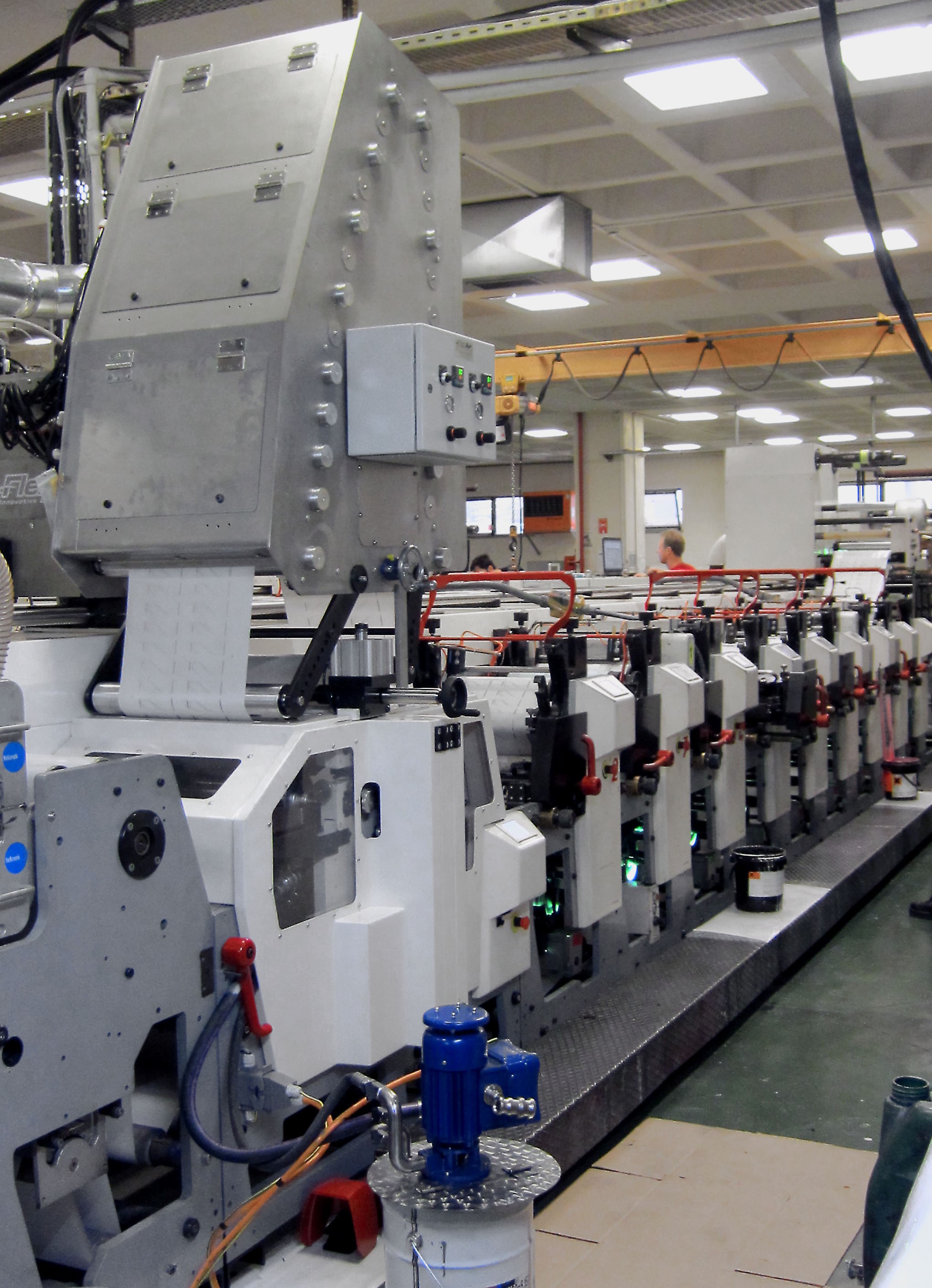The rotogravure printing process (gravure for short) was first patented in 1860 as a collaboration between Klic and Fawcett in Lancaster.
Gravure is mainly used for high detail printing and larger runs such as packaging, magazines and catalogues, thermal coating of paper, receipt rolls, semi-conductors and OLED’s, money, and even simulated foil to mimic hot and cold foils.
It’s a more common process in wide web but is becoming more popular in narrow web, especially for its metallic effects used in luxury labels. It offers flexibility and is a great addition to offset, flexo or combination printing presses.
How gravure works
Gravure is a type of intaglio printing done with a cylinder/carrier that has an engraved image that sits in an ink tray. An oscillating doctor blade removes excess ink, leaving the ink in the engraved image which is then transferred to the substrate that runs between the print cylinder and an impression roller.
If the doctor blade scraping off the excess ink does not oscillate it will leave lines and scratches. If this happens, the gravure cylinder will need replacing as any dents or scratches will render the cylinder useless and require a regrind, chrome plating and engraving.
 The cost of a cylinder is not high, but the time needed for gravure cylinder production can make it a less than optimum choice for short production runs. If cylinder engravers are not local and the cylinders need to be shipped by sea or air freight, frequently changing specs are not possible.
The cost of a cylinder is not high, but the time needed for gravure cylinder production can make it a less than optimum choice for short production runs. If cylinder engravers are not local and the cylinders need to be shipped by sea or air freight, frequently changing specs are not possible.
The process can run with multiple substrates from paper, aluminium, films, etc. and can run at extremely high speeds. Changeover times for gravure though can be labour-intensive due to the size of the wide web press; narrow web gravure does not pose this problem.
Advantages of gravure
- Long runs
- High run speeds
- High quality print
- Substrate versatility from thin paper to aluminium for cans, wine bottle capsules, etc.
- Can be added as an option for narrow web label presses
Disadvantages of gravure
Although gravure has its advantages like high speeds and good print quality, it has one flaw: the size of a gravure press. They are usually very wide, tall, and long, and with all the required tooling can amount to exceptionally large areas needed to house these presses.
The consumption of electricity, gas for overhead burners and extraction systems as well as parts required for maintenance, are also disadvantages. Overall costs make it an expensive process but it still has a big place in the industry depending on what the company is printing.


Inline gravure unit on an MPS EXL-P packaging press
Add gravure to your flexo press
A gravure unit integrated in a flexographic printing press, especially in the narrow web format, is a good alternative.
This increases the flexibility of jobs that can be produced on a combination press with extra applications and embellishments. It’s often used for simulated foil, security work, primers, high-quality print, and more.
When ordering an MPS press, gravure units are available in rail and fixed unit formats and, depending on the various job requirements, can be placed in the best position on the press.
Summary
All in all gravure printing is here to stay.
It has lots to offer as wide web or narrow web presses, or adding one or multiple units on a combination flexo press.
When upgrading an older gravure press, buying a new one, or adding gravure units to your narrow web combination press, the decision needs to be well thought out. Take your current and potential jobs into account and consider what’s right for your company to get the best results from your gravure printing process.
Get in touch
If you have questions or suggestions on this or any of my other snippets, or need guidance in gravure printing, please feel free to contact me.
You can reach me via LinkedIn or via email k.marsh@mps4u.com.